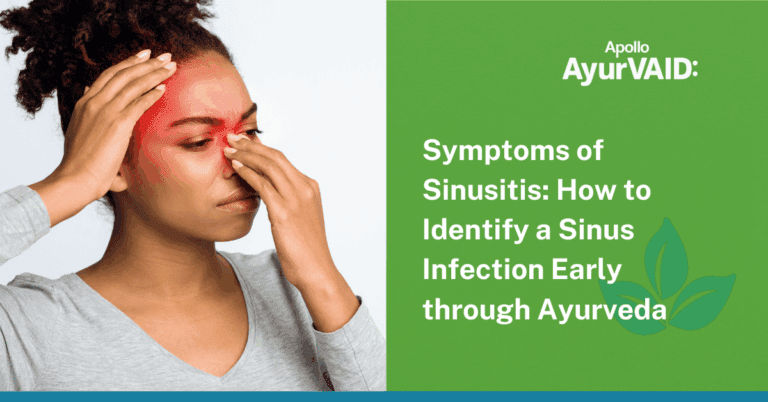Introduction
What is migraine?
For many, the term evokes images of debilitating pain, a constant attack on the senses that stops daily life activities. Migraine refers to one of the most prevalent neurovascular disabling diseases in the world, impacting an estimated 14.7% of the world’s population, or roughly one in seven persons. This episodic and sometimes disabling disorder is marked by repeated, once or more daily, severe headaches, unilateral and of the throbbing or pulsating variety, with a duration ranging from 2 to 72 hours. Women are disproportionately afflicted, with a ratio of 3:1 over men, particularly between the ages of 14 and 50 years.
Apart from the pain, a migraine attack will usually come with a group of other incapacitating symptoms. Patients often develop nausea and vomiting, hence the nickname ‘sick headache.’ Light (photophobia) and sound (phonophobia) sensitivity are also frequent, driving victims to find refuge in dark, quiet spaces. Some people may even get an ‘aura,’ a set of sensations such as fuzzy eyesight, blind spots, flashes of bright lights, fleeting loss of vision, or tingling, which are a precursor to the headache taking its full impact. Let us discuss migraine causes and types of migraine according to Ayurveda in this blog.
Migraine in Ayurveda
Migraine in Ayurveda
In Ayurveda, migraine is closely correlated with ‘Ardhavabhedaka,’ a term signifying a ‘half-sided headache.’ The word ‘Ardhavbhedaka’ itself is derived from ‘Ardha’ (half side) and ‘Avabhedaka’ (breaking through, perforating, or bursting-out type of pain), which perfectly describes the characteristic unilateral pain. Ayurvedic texts classify headaches, or ‘Shiroroga,’ based on the involvement of the three Doshas—Vata, Pitta, and Kapha. Ardhavabhedaka is predominantly understood as a Vata and Pitta-predominant Tridoshaja Vyadhi (a disorder involving all three doshas), though an imbalance in any single dosha can also trigger it.

Migraine Causes as per Ayurveda
The causative factors for migraine in Ayurveda include genetic, environmental, metabolic, and hormonal – all of which result in vitiation of Doshas. Migraines predominantly arise from two major root causes: an irritable nervous system and poor digestion. Ardhavabhedaka is more gastroenterological than merely neurological, as patient complaints involve acidity and stomach issues.
From the Ayurveda perspective, the main migraine causes and triggers are:
- Dosha imbalance: The most important cause of migraine is an imbalance of Vata and Pitta Doshas. Vata is responsible for nervous system function and brain function; Pitta is responsible for metabolic function and circulation. An imbalance in these doshas leads to hampered metabolism and an irritated nervous system.
- Poor digestion and Ama: An unhealthy diet and lifestyle weaken digestive fire (Agni), resulting in Ama. This Ama clogs channels (srotas), such as the “Manovahi srotas” (mind channels), causing pain.
- Nervous Sensitivity and Dull Ojas: A broken nervous system and lower Ojas weaken the body’s inherent strength, and thus a person becomes more sensitive to migraine attacks.
- Weakness of Vasomotor Power: Variation of blood flow in the capillaries is also a probable cause.
Lifestyle Factors (Viharaja Nidana):
- Stress: Physical or mental strain, rushing, overthinking, fear, depression, anxiety, mental tension, and suppression of natural urges are common causes of migraine.
- Sleep disorders: Insomnia, abnormal sleep habits, sleeping too much, daytime sleep excess (Diva Swapna), or late-night wakefulness (Ratri Jagarana).
- Physical exercise: Inadequate exercise or excess physical exertion can lead to a Vata imbalance
- Other practices: Smoking or exposure to smoke, excessive intercourse (Atimaithuna), and excessive speech (Atibhasya).
Environmental Influences:
- Sensory stimuli: Bright lights, loud noises, pungent odors or perfumes, and foul smells.
- Temperature extremes: Direct exposure to the sun, heat, excessive sweating, extreme cold, or cold wind (Sheet marut sansparshaat).
- Weather changes: Variation in weather patterns, high altitude, or changes in barometric pressure.
Hormonal Factors:
Variable hormone levels, especially those of the menstrual period, play a major role in migraine among women.
Types of Migraine as per Ayurveda
Ayurveda categorises types of migraines (Ardhavabhedaka) according to the most active Dosha, each with different symptoms and causative factors.
- Vataja Ardhavabhedaka: This is caused by an aggravation of Vata Dosha due to a Vata-agitating diet and lifestyle. Reasons for this type are lack of sleep, rush, anxiety, indigestion, fasting, irregular food, fear, tension, exposure to extreme cold, and suppression of natural urges. Symptoms are usually constipation, dryness of the skin, and sudden, sharp, cutting, or pricking pain, which becomes worse with each pulse. Pain usually involves one half of the head that spreads to the shoulder and neck.
- Pittaja Ardhavabhedaka: This type is caused by an imbalance of Pitta Dosha. Hot and spicy food, junk food, drinks, sun exposure, heat, excessive sweating, and stress trigger it. Symptoms are irritability, photophobia, and a burning sensation in the eyes.
- Kaphaja Ardhavabhedaka: It is due to practices that provoke Kapha. This involves the consumption of heavy, high-caloric foods, processed foods, canned food, milk products, fermented foods, meat, inactivity, and excessive daytime sleeping. Symptoms include a heaviness or dull pain, throbbing pain, nausea, lethargy, and possibly congestion of the sinuses or the sensation of fullness in the head.
- Tridoshaja Ardhavabhedaka: All three Doshas—Vata, Pitta, and Kapha—are vitiated in some instances. This causes an intricate combination of all three types of symptoms and is more difficult to treat. A case report profiles a patient who was diagnosed with Tridoshaja Ardhavabhedaka, suffering from repeated right hemicranial headaches, nausea, vomiting, burning epigastrium, and sour belching, worsened by sunlight and loud sounds.
Common Triggers
- Irregular eating patterns: Fasting, missing meals, eating before the last meal gets digested or heavy-to-digest food.
- Certain foods and drinks: Junk, processed, high-calorie foods, white sugar, white flour, milk products, meat items, coffee, chocolates, cheese, ice cream, too much sugar or salt, caffeine, tea, and liquor.
Too much consumption: Taking too much cold water or alcohol.
Ayurveda Management
Ayurveda’s treatment of migraine(Ardhavabhedaka) revolves around curing the disease at its root cause by balancing the vitiated Doshas of the digestive and nervous systems. This entire process incorporates various processes that include avoiding the causative factors (Nidana Parivarjana), dosha-wise diet, stress management measures (such as meditation, relaxation, breathing exercises, and yoga), herbal medicine, and lifestyle management. The detoxification of the body can be achieved effectively with Panchakarma procedures like Virechana (purgation), as well as Nasya (administering instillation through the nostrils). The supportive therapies include but are not limited to Shirovasti (the retention of medicated oil on the head), Shirolepa (medicated paste on the forehead), Shirodhara (the drip of medicated oil from the forehead), and Kavala Graha (medicated oil pulling). The goal is to establish balanced doshas, provide long-term relief and regulate migraine symptoms.
Conclusion
Ardhavabhedaka (Migraine) is not just a neurological condition but an expression of dosha imbalance, impaired digestion, and nervous sensitivity. Its causes typically have their origin in flawed lifestyle, diet, and stress conditions that disrupt the equilibrium of Vata, Pitta, and Kapha. Ayurveda lays strong emphasis on a holistic treatment—rectifying digestion, balancing doshas, fortifying the nervous system, and avoiding causative factors—through diet, regulation of lifestyle, medicaments, and Panchakarma treatment. By correcting the underlying imbalances and not just covering up symptoms, Ayurveda provides a long-term solution for relief and enhanced quality of life for migraine victims.






